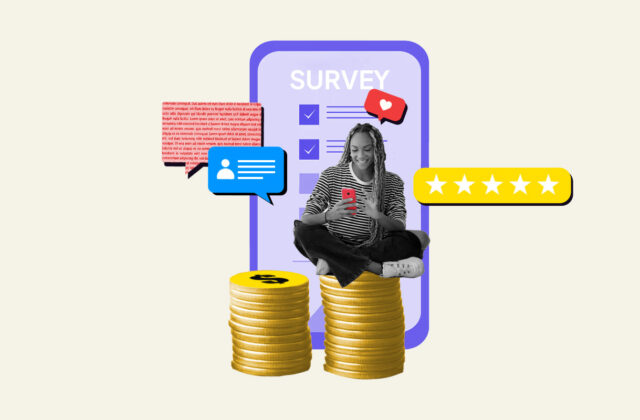
Consumer data digitization and market research methods have developed a phenomenon that upends traditional payback models in the realm of consumer feedback: the paid survey incentive system.
Perhaps the most prevalent widespread variety involves compensation in the form of gift cards. It is a constituent of a virtual subeconomy that commodifies attention, expression of preference, and demographic identity.
From a digital economy perspective, obtaining gift cards as compensation for surveys represents a redistribution of research and advertising budgeted funds from corporate entities to individuals.
The alternative incentive system eschews cash payments and delivers closed-loop expenditures in sanctioned marketplaces.
Market Research Evolution: From Monolithic Panels to Distributed Feedback Mechanisms
Historically, market research employed fixed, demographically defined panels run by firms with the capital to support long-term behavior studies. The movement to online has unbundled this approach.
Web and mobile-based survey environments now permit a dispersed, opt-in subject base to provide real-time preference and behavior information to brands, research firms, and platform guardians. With it came new forms of compensation models.
While technologically feasible through direct cash payment, transactions costs in the form of fraud risk management, payment processing fees, and foreign remittance difficulties made it not efficient at scale.
The use of gift cards solved these constraints by making automatic distribution easy, cutting middlemen out of the equation, and giving spending lock-in to pre-specified markets.
Gift card issuance levels incentives between business partners and research sites. Consumers are induced into consumer activities that facilitate brand interaction, typically limited to a specific retailer or site. In essence, consumers are provided a method of earning free gift cards.
This system is intrinsically geared to keep value within specified ecosystems, thereby enhancing the participant’s overall lifetime value from a commercial perspective.
Operational Mechanics and the Platformization of Attention
Paid survey websites act as middlemen between consumer goods, third-party market researchers, and a worldwide pool of online participants. Sites screen participants via initial profiling surveys and track response consistency to guarantee data integrity.
As compensation for participating in surveys, users earn points, which build up toward thresholds that prompt a gift card award. Most systems employ gamified models, where engagement is rewarded incrementally and thresholds are employed in order to minimize platform churn and maximize behavioral return data.
From an infrastructure standpoint, the architectures are built for scale and redundancy. Authentication of identity is done increasingly via device fingerprinting and IP verification to combat repeated responses.
Collection of data is anonymized at scale but cross-tabbed with demographic baselines to provide actionable segmentation.
From the user’s perspective, this seems invisible, while the backend is a highly optimized data brokerage engine where consumer feedback is minimized in real-time into monetizable insights.
Behavioral Economics and Incentive Alignment
From the point of view of behavioral economics, the adoption of gift cards leverages several well-documented psychological levers.
Closed-loop gift cards make recipients feel there is “free money” involved, reducing friction in usage and ensuring maximum carryover.
They exploit the sunk cost fallacy too; once invested in accruing points, individuals are inclined to complete the next survey in order to reach the reward point regardless of diminishing marginal utility.
This design aligns with the goals of the platform: maximizing user engagement time, ensuring consistent traffic across survey slots, and attaining a stable reservoir of qualified respondents.
In practice, the electronic work done in exchange for gift cards is under a micro-compensation model, where overall value per hour is considerably less than minimum wage in high-income economies but conceivably large where labor flexibility or complementary income is more important than rate-based productivity.
Geographic and Demographic Impact Analysis
The financial viability and attractiveness of receiving gift cards from compensated surveys vary immensely geographically. In countries with high living costs such as the United States or United Kingdom, the activity is ancillary and often associated with lifestyle-led participation—like in loyalty schemes.
Individuals involved are largely students, retirees, underemployed workers, or participants in digital multitasking environments.
Conversely, in less developed countries or developing countries, survey locations face the contradiction of higher interest but lower eligibility. The majority of surveys are geo-focused or demographic-directed to individuals with disposable incomes that can be used for the survey sponsor.
This leads to segmentation at the level of platforms, where more resourceful country user accounts have more valuable survey opportunities and gift cards, while users in other regions face longer waiting times or less valuable opportunities.
Demographically, surveys requesting discreet consumer behavior data are skewed towards city residents with active spending power. Consequently, young segments that are highly digitally literate are disproportionately likely to become qualified to access and finish the high-value activities.
This further reinforces digital divides and produces stratified participation where only certain user profiles can potentially deliver ongoing returns from survey-based gift card schemes.
The Ecosystem of Stakeholders and Feedback Loops
The model depends on a three-way interaction between business clients, platform providers, and participant consumers.
The platforms need to balance quantity and quality of responses to satisfy clients without diminishing the interest of participants. This balancing requires sophisticated incentive engineering, real-time analysis, and trust mechanisms to ensure fair compensation and timely reward release.
Corporate consumers carry the resulting insight to optimize product features, reposition in markets, or test consumer sentiment. Such learnings are inputs into repeated product development loops and campaign strategy alignments.
Gift card motivations, in this way, are not participant remunerations but operational inputs into a much larger feedback mechanism that sustains adaptive marketing routines.
Volunteers, in return, are data workers in a virtual-gig economy, with participation voluntary yet promoted by psychologically powerful incentives.
Their behavior creates value, not simply in data forms, but as components of an overall system of predictive models that inform more lengthy economic activity across product and service economies.
Conclusion
Gift card revenue through paid-for surveys is a small but compositionally significant part of the contemporary digital economy. It is attention commodification and consumer insight monetization at scale.
Architectures built to enable this model are highly optimized along incentive alignment, operational scalability, and data quality axes. But in so doing, they reveal the stratified nature of digital opportunity, where geographic and demographic filters determine entry into value creation.
To consumers, the model is a low-friction means of extracting non-cash value out of surplus attention or leisure time. To corporate clients, it’s a scalable means of tapping distributed consumer intelligence.
The long-term sustainability of this model depends on continued innovation in incentive design and crafting user-sensitive reward systems that recognize the transactional value of data contribution in a worthy and dignified manner.
Raghav is a talented content writer with a passion to create informative and interesting articles. With a degree in English Literature, Raghav possesses an inquisitive mind and a thirst for learning. Raghav is a fact enthusiast who loves to unearth fascinating facts from a wide range of subjects. He firmly believes that learning is a lifelong journey and he is constantly seeking opportunities to increase his knowledge and discover new facts. So make sure to check out Raghav’s work for a wonderful reading.




